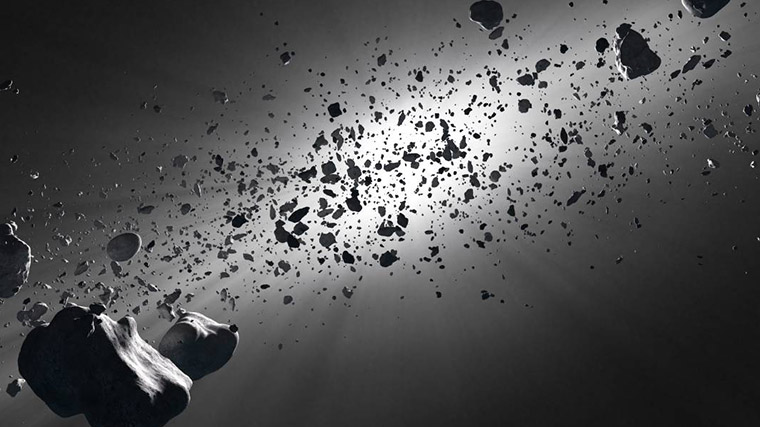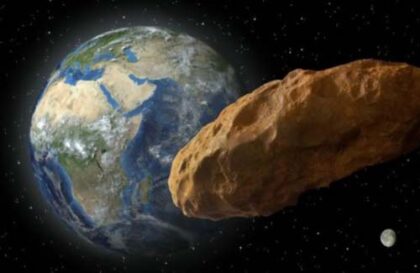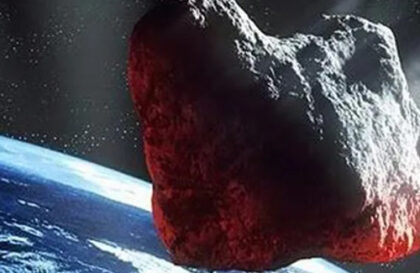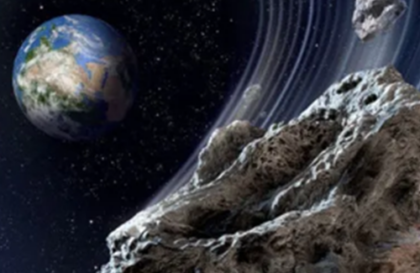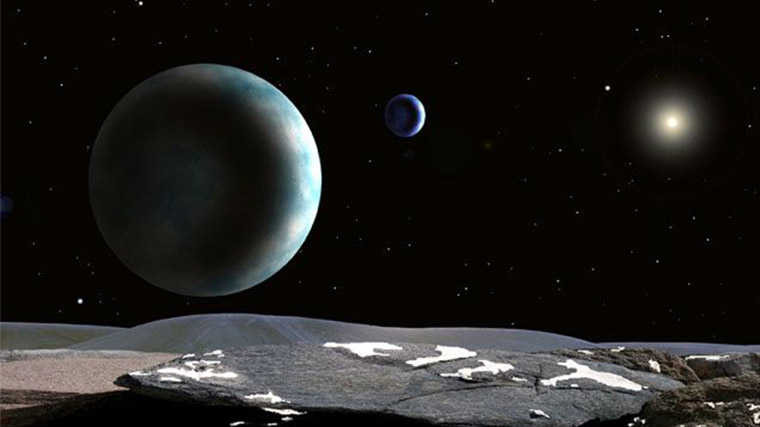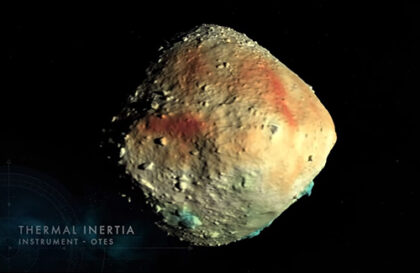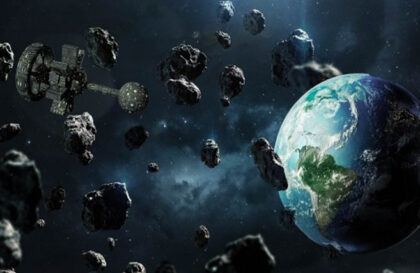The main asteroid belt, located between the orbits of Mars and Jupiter, is a unique zone in the solar system. Composed of asteroids and minor planets, it is distinct from other formations such as the Kuiper belt, the scattered disk, and the Oort cloud.
Asteroids are small astronomical objects that orbit around the Sun. They usually have no atmosphere and lack the characteristic features of comets. Minor planets, including dwarf planets, asteroids, Trojans, and centaurs, are also part of this diverse ensemble.
The mass of the main belt is relatively small – only about 4% of the mass of the Moon and 22% of the mass of Pluto. The largest asteroids include Ceres, Vesta, Pallas, and Hygiea. Ceres, the largest of them, has a diameter of about 950 km, leading to its classification as a dwarf planet. Other large asteroids have an average diameter of less than 600 km.
It is important to note that the main belt is not a continuous mass of asteroids. They are scattered at great distances from each other, creating a sparse structure. As a result of this distance, spacecraft can safely fly through this belt.
Collisions between asteroids are common. They occur on different time scales. Thus, asteroids with a diameter of about 10 km collide approximately once every 10 million years. Such collisions can lead to the formation of families of asteroids or even the union of two astronomical objects.
The main belt also contains many dust lanes, where the smallest particles are only a few micrometers in diameter (a micron is a millionth of a meter: 1×10-6 meters). This dust is formed as a result of collisions and the impact of meteorites on asteroids. Under the influence of solar radiation (the Poynting-Robertson effect), these particles slowly move in a spiral toward the Sun.
The phenomenon of zodiacal light, a faint glow, is also associated with asteroid dust and comet materials. This light is visible at night and comes from solar reflection from these particles. The zodiacal light is characteristic exclusively along the plane of the ecliptic and indicates a gradual renewal of the zodiacal clouds, maintaining a continuous glow for 700 thousand years.
Classification of asteroids
The general classification of asteroids is based on the characteristics of their orbits and the description of the visible spectrum of sunlight reflected by their surface.
Most asteroids in the main belt belong to three main spectral classes: carbon class C, silicate (silicon) class S, and metallic class M. There are asteroids of other, specific classes, but their number in the belt is very small. Small bodies of the main belt that have not undergone gravitational differentiation are considered to be homogeneous. Large objects having a spherical or close to that shape, such as Ceres, Vesta, Pallas, and Hygiea, have a heterogeneous internal structure.
Class C carbonaceous asteroids
so named because of the high content of carbon compounds in their composition. This is the most common spectral class – about 75% of all objects of the main belt. They predominate on the outer edge of the main belt (80%). This is 3.5 astronomical units from the Sun. But at a distance of 2 astronomical units, there are only 40% of them.
The most prominent representatives of carbonaceous asteroids are Hygiea, Matilda, Andromache, Isolde, and Bamberg. In composition, they are close to carbonaceous chondrites, the oldest meteorites found on Earth with an age of 4.5 billion years. Known meteorites of this class are Orgueil (France, 1864), Allende (Mexico, 1969), and Tagish (Canada, 2000).
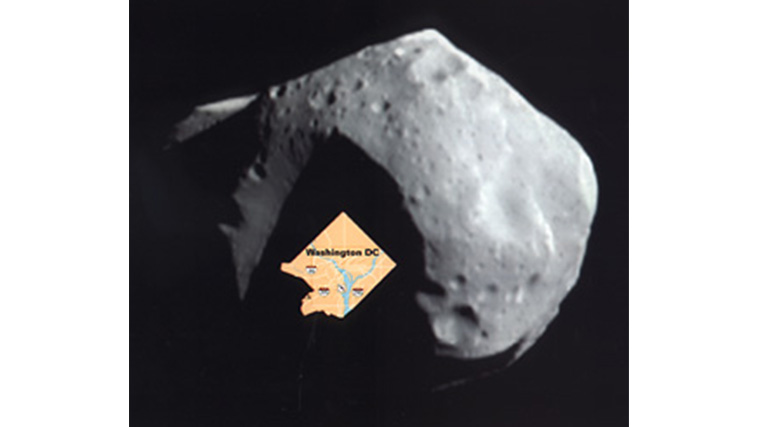
S-class silicate or silicic asteroids
are the second most common type of matter in the main belt and makeup about 15% of all asteroids. Remote spectral analysis of the surface revealed the presence of silicates and metals (iron and magnesium) in their composition and the almost complete absence of any carbonaceous compounds. This indicates that the rocks at these sites have undergone significant changes due to partial melting and differentiation.
Their greatest number in the asteroid belt is located at a distance of 2.2 astronomical units from the Sun, and at a distance of 3 astronomical units, they become rare.
Representatives of this class include asteroids: Juno, Eros, Irida, Amphitrite, Herculina, and Itokawa.
M class metal asteroids
makeup about 10% of all asteroids. Their main difference from the two previous classes is the high content of iron and nickel. They may be fragments of the metal cores of large spherical cosmic bodies that were destroyed as a result of mutual collisions in the early stages of the formation of the solar system. With a high degree of probability, it can be assumed that they are the main source of iron meteorites falling to Earth. This spectral class includes asteroids: Psyche (the largest), Lutetia, and Calliola.
As new data become available, the classifications of asteroids will be refined, because in many groups there are objects that only partially meet the established criteria
Discovery of the asteroid belt
In 1596, Johannes Kepler predicted the existence of a planet between Mars and Jupiter based on distances in the solar system. In 1766, Johann Daniel Titius formulated the Titius–Bode rule to predict the location of planetary orbits. The discovery of Uranus in 1781 confirmed this rule.
The discovery by astronomer Giuseppe Piazzi on January 1, 1801 was fundamental. He discovered an asteroid moving in the orbit predicted by Bode’s rule. Piazzi called him Ceres. Then Heinrich Olbers discovered Pallas. In 1802, William Herschel proposed the term “asteroid” and classified them.
The following asteroids – Juno, Vesta, Astrea – were found in 1807 and 1848. Hundreds of astronomers joined the search, and by 1868 over a hundred asteroids had been discovered. The discovery of Neptune in 1846 challenged Bode’s law.
The term “asteroid belt” appeared in the 50s of the XIX century. By 1921, 1,000 asteroids had been found, and in 1981, 10,000. Modern methods of automatic observation led to the discovery of 100,000 asteroids by the beginning of the 21st century. Research on this belt is ongoing.
How did the asteroid belt form?
The creation of the solar system began 4.6 billion years ago with a gravitational collapse, forming a protoplanetary disk and planetesimals. Planetary embryos, the prerequisites for planets, were formed from them through collisions.
The asteroid belt was probably formed from planetesimals under the influence of the growing Jupiter. Violent collisions and the gravitational effects of Jupiter prevented the planetesimals from coalescing into a planet. 99.9% of the solid mass was lost. Some collided with the inner planets, some were thrown out of the solar system, and the formation of a large planet did not happen.
From the remnants of 0.1% of the mass, under the influence of a stabilized Jupiter, an asteroid belt arose. Orbits have stabilized, and collisions have decreased. Many contain ice that formed behind the snow line, then 2.7 AU from the Sun.
The temperature of the belt varies depending on the distance from the Sun: from -73°C to -108°C. The rotation results in changes in surface temperature due to solar radiation and background starlight.
And it is worth mentioning that there is an unscientific version that the asteroid belt is pieces of an exploded planet. This story is described in the novel by Alexander Kazantsev “Faetes”. There, the planet Phaethon is shattered into pieces as a result of a nuclear explosion.
Credit рhoto:
https://www.southcoastregister.com.au
https://news.cornell.edu/stories
https://www.thespaceresource.com
https://www.esa.int
